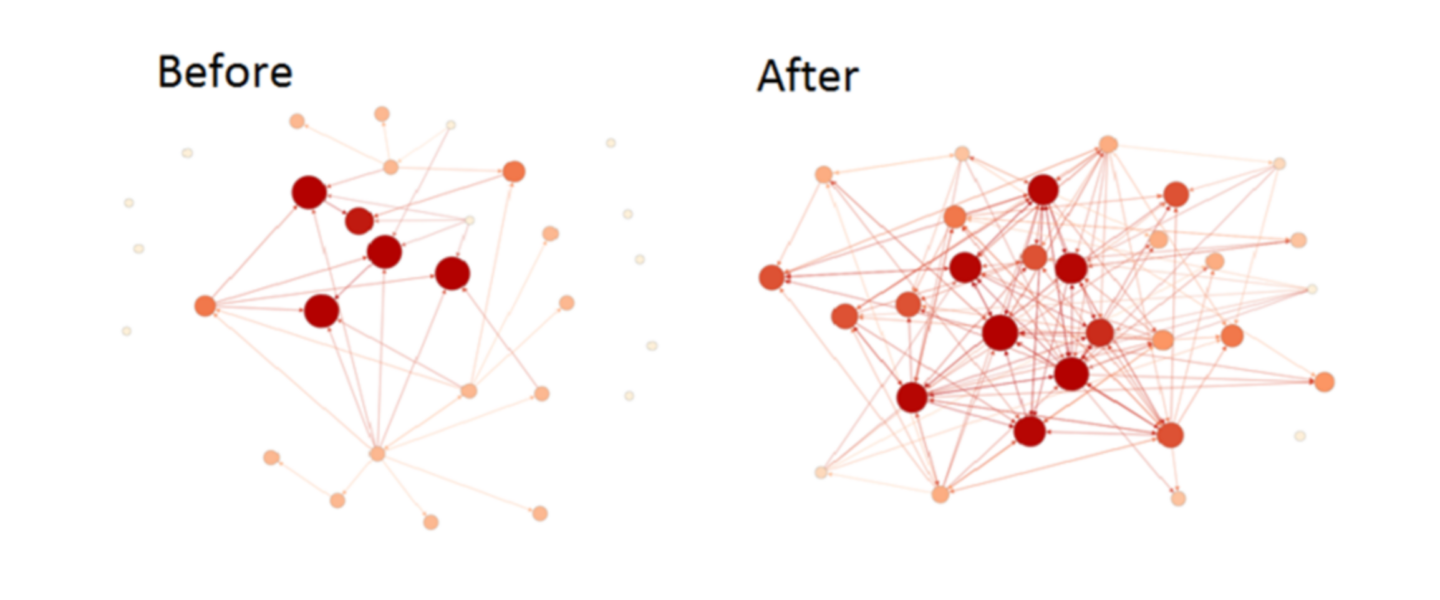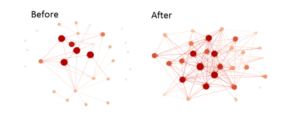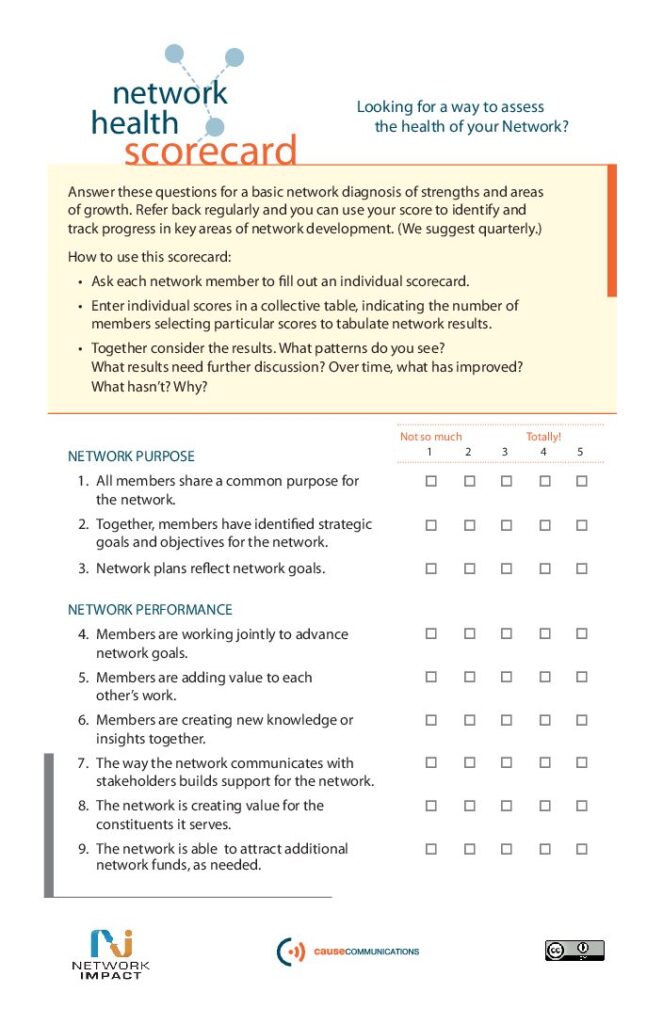
This blog is part of a series sharing tidbits from our Blue Garnet toolkit. Follow along for blogs on data visualization, evaluating networks, and more!
At Blue Garnet, we talk a lot about strategy and learning being two sides of the same coin. We recognize the importance of taking time to step back and evaluate how well we are doing against our strategy. This allows us to hold ourselves accountable to what we set out to do, and it gives us the opportunity to course correct and better achieve our intended impact. In the world of social impact, we know that both our work and evaluation are focused on long-term change. With that, what to track and how to measure it is not always obvious or easy to define. But just because it may be difficult to measure, does not mean we’re off the hook in tracking and reporting our progress toward desired outcomes. In this blog (and the others in the series, “From Our Toolkit”), we discuss a few areas of social impact that seem “hard” to measure and offer ideas for how to get started at your organization.
For today, networks.
What are networks?
Networks are a collection of people organized for mutual support and the exchange of ideas. While the people may work in different issue areas, at different types of organizations (nonprofits, funders, corporations), and with different methods, something links them together. They have a common factor, like being working mothers in the social sector, or young professionals in philanthropy, or organizations fighting climate change. They may pool knowledge and resources or promote professional development to accelerate capacity building.
Collective impact initiatives are “the commitment of a group of important actors from different sectors to a common agenda for solving a specific social problem” (SSIR). These initiatives are also more formally organized, supported by a backbone organization, requires substantive engagement from its members via mutually reinforcing activities, and shares a set of measures to track progress.
In contrast, networks are loosely organized. Some examples of networks include:
- SoCal Grantmakers, a network aimed at connecting and equipping philanthropists across the region in support of effective grantmaking (our BG Partners are active members),
- National Network of Consultants to Grantmakers, a support and learning network for social impact consultants (Blue Garnet is an active member of this network!),
- and Emerging Practitioners in Philanthropy, a network of changemakers who seek a more equitable and effective philanthropic sector (I, Sarah, am part of their LA chapter!)
So why should we evaluate networks?
As with any evaluation effort, we need to ask the “So what?” question. Why does the network exist or gather its members? Is the network fulfilling its intended purpose for its members, and to what extent? Should the network continue to exist, or has it completed its purpose? Moreover, the organizers or funders of a network want to know the return on their investment.
How do we go about measuring networks?
To get started with measuring the strength of your network, you need to specify your learning questions. You can ask yourself:
- What value has been created – both personally and professionally – for members, as a result of their participation in the network?
- Is the network helping individuals and organizations create connections that help them advance their work?
- Are network members further empowered to pursue X cause (the mission of the network)?
Then start measuring! Common measures we’ve seen with networks include:
- Degree of connection between members (who are the members and in what ways are they participating/connecting?). Example from Network Impact’s evaluation of the Durfee Foundation’s Stanton Fellowship found that individual fellows experienced expanded reach and connectivity (visualized by “network maps”)

- Number of resources shared (what information is being shared, and with whom? Is it being shared efficiently?)
- Members’ perceived value of the network (is the network helping advance members’ work?), and outcomes achieved (are there clear signals of progress?).
As with any evaluation project, use a variety of tools to reach your answers, including surveys, interview, focus groups, etc.
What resources are available?
To learn more, check out Network Impact. Network Impact specializes in providing frameworks and guidance for nonprofit networks. Their free resources provide a great starting point for what questions to ask and what angles to consider in evaluating the effectiveness of your network.
We especially recommend their sample evaluation and Network Health Scorecard. This scorecard is a tool for gathering feedback, which a network can use to gauge how well it is doing and what sort of improvements might be useful.
In sum, it is both important and possible to measure the health of a social impact network. It helps you better understand how the network is doing, and what can be improved to better achieve your desired outcomes. If you have further questions on evaluation and learning, or networks, please feel free to reach out to hello@bluegarnet.net!

